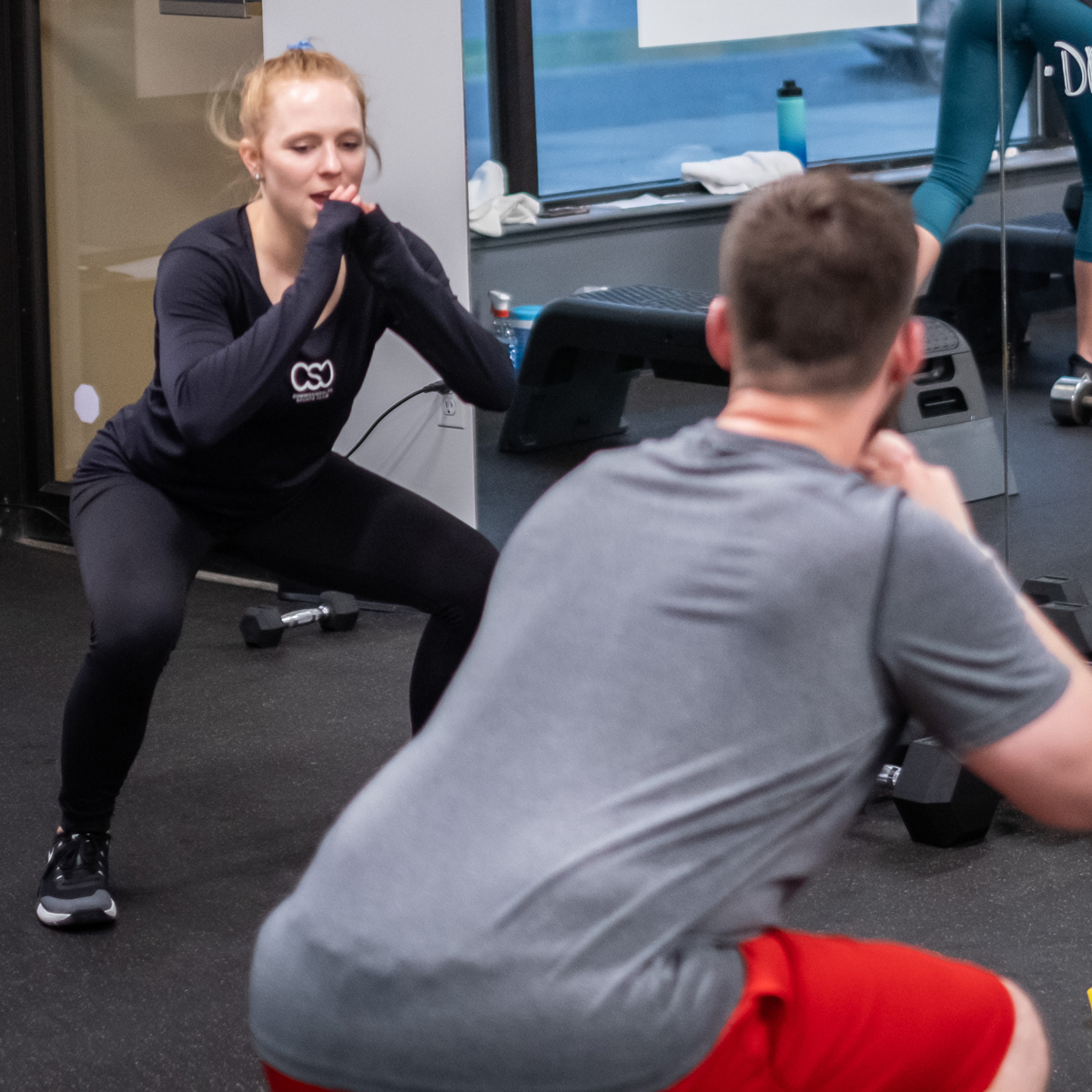
Why do trainers like myself always incorporate Glute (aka Gluteus Maximus aka the Butt) work into our exercise programs? Simply put, it’s the biggest muscle in the body and it anchors all hip and core activation for lower body movement. It’s also a key factor in lower body stabilization for upper body movement. Once of my favorite sayings is “you can’t fire a cannon from a canoe” which is a simple way of saying proximal stability creates distal mobility. If your core, hips and lower body are not stable, you can’t effectively move your upper body. Again, your butt is a major factor in core/hips/lower body stabilization.
Fitness Tip: you should warm up your butt before working out and always do some butt specific exercises in your workout.
I recently trained for three months to complete a one-mile road race (NY 5th Ave Mile) and after two months I started experiencing front hip pain. The cause: I wasn’t getting adequate butt activation to help posterior gliding of my femoral head—simply put, because my butt was weak, my leg wasn’t pulling back correctly after striding out. This led to my hamstrings getting over worked and causing pain.
Have lower back pain? What do they always say, strengthen your core? Well guess what, your butt (and hamstrings) make up almost half of your core, not your lower back. “Butt exercises” like mini-band sidesteps, side-lying clamshells, ice skater jumps, etc. are great for your back only if you do them correctly with hip movement and not spine or back movement. Same with bridging, hip thrusts and deadlifts, make sure you are getting true hip extension and not just extra low back arching.
Video for true hip extension https://youtu.be/Z9JgRuokh40 (Written on September 3, 2019 at 5:52 am, by Eric Cressey)
Experiencing pain when running or going downstairs or heaven forbid jumping or changing direction while running?
Fitness Tip: having a strong butt can help reduce pain in your knees, ankles and heels.
When your heel strikes, you naturally cave inwardly, and it passes up the chain. Because your butt functions in three planes of motion, the gluteus maximus is in an awesome position to help by slowing down femoral internal rotation, adduction, and flexion.
Video for bowler squats: https://youtu.be/X5xW-eVRg6c (Written on September 3, 2019 at 5:52 am, by Eric Cressey)
So that is why Personal Trainers spend so much time focusing on your butt. Exercises that target your butt will help you move better, with less pain and more power and ease.
Written by Tom Nyilis, CSC Fitness Coach

